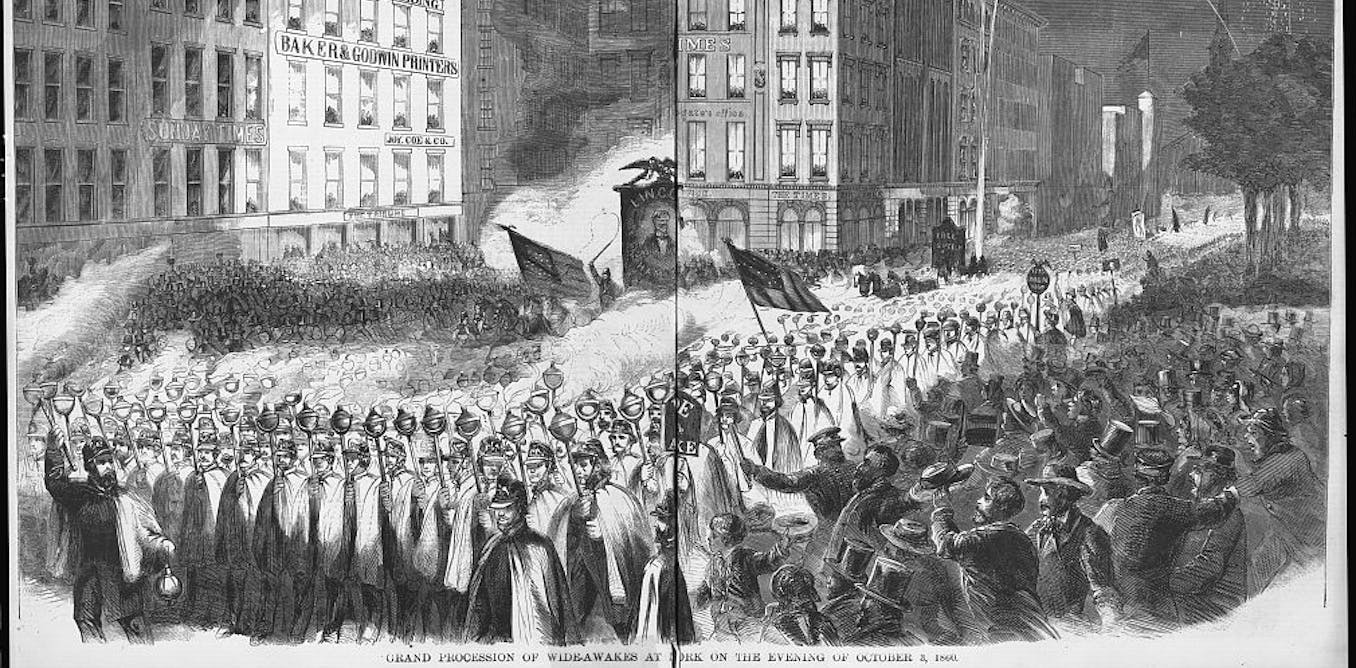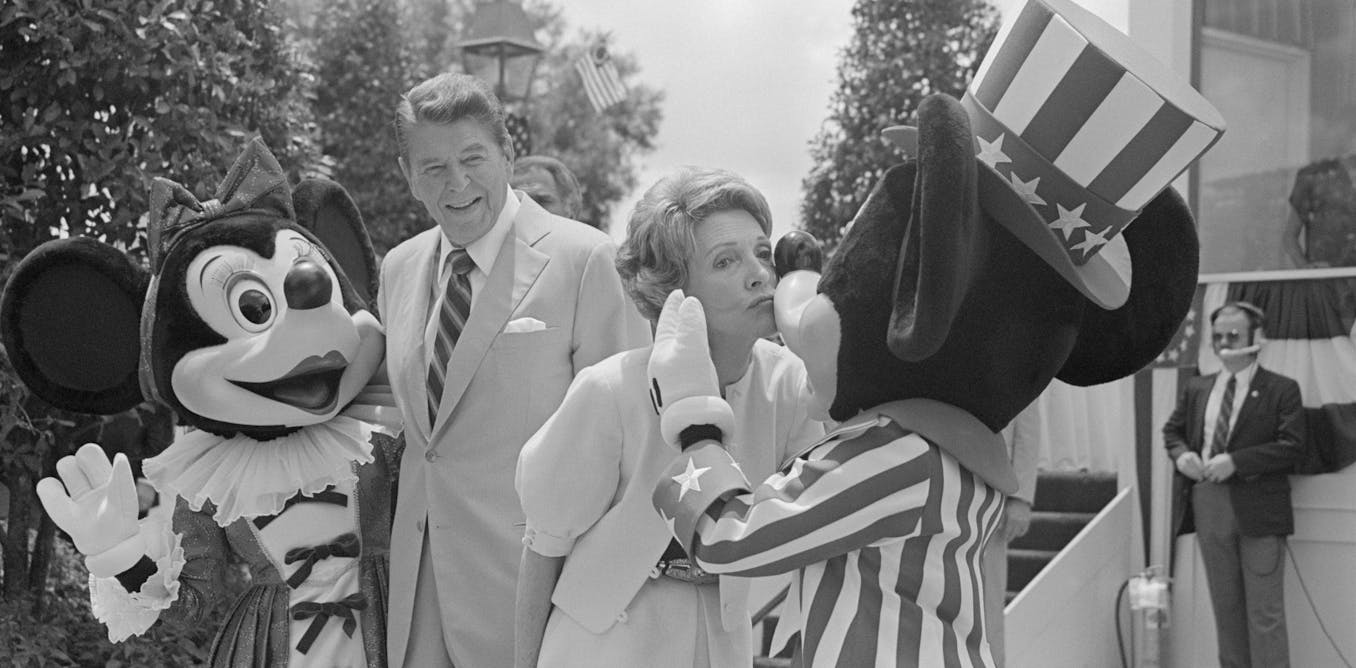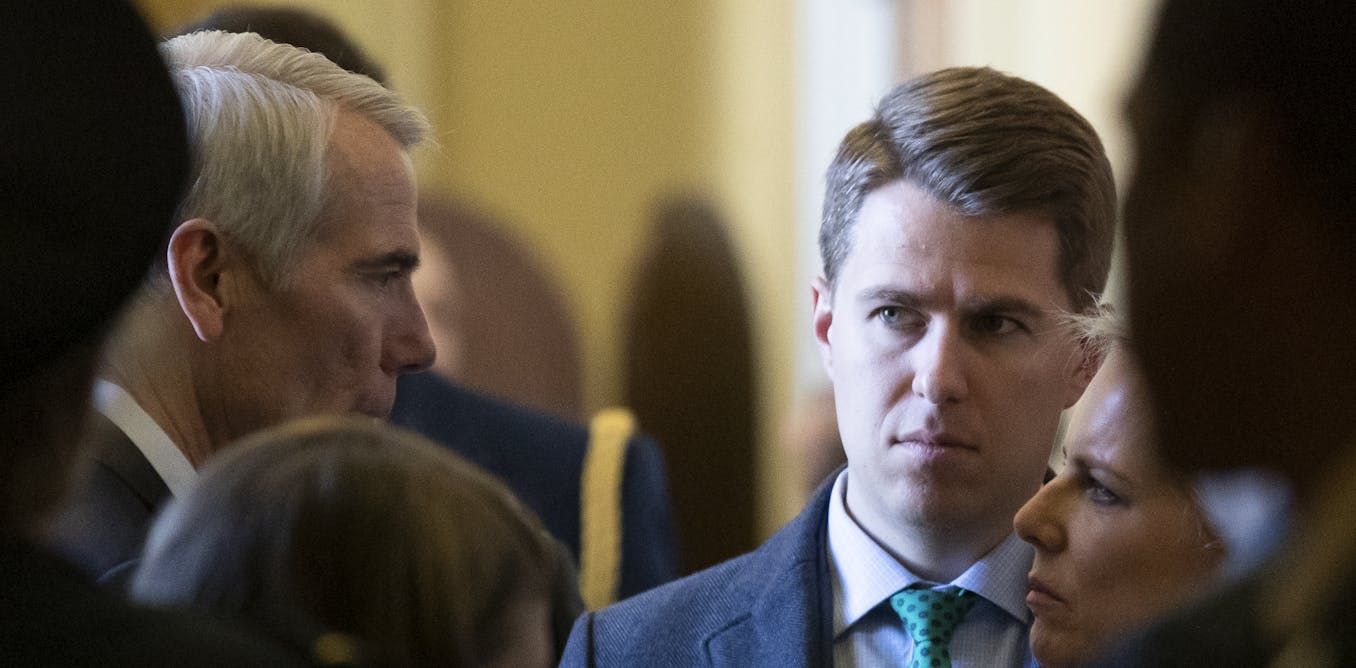There’s one question I get every time I give a talk. I’m a curator of political history at the Smithsonian Institution, and when I discuss the deep history of political division in our country, someone in the audience always asserts that we can’t possibly compare past divisions to the present, because our media landscape is doing unprecedented harm, unlike anything seen in the past.
I’m always struck by people’s belief in a placid media landscape in the past, a time of calm before the internet blew everything up.
In fact, the most divided period in the history of U.S. democracy – the mid-1800s – coincided with a sudden boom in new communications technologies, confrontational political influencers, widespread disinformation and nasty fights over free speech. This media landscape helped bring the Civil War.
The point is not that 21st century media is like the 19th century’s, but that the past was hardly full of the upstanding, rational, nonpartisan journalists many like to believe it was.
And at this era’s center, in the campaign that actually led to the war, was a huge, strange, forgotten movement – the Wide Awakes – born from this media landscape and fought out in the newspapers, polling places and, ultimately, battlefields of the nation.
Library of Congress Prints and Photographs Division
From snark to high-minded abolitionism
Newspapers had been around for centuries, but as American rates of literacy rose, millions of ordinary citizens became daily news junkies.
The number of papers jumped from a few publications in 1800 to 4,000 brawling rags by 1860, printing hundreds of millions of pages each year. They ranged from the snarky, immensely popular New York Herald and the blood-drenched true crime reports in the National Police Gazette to the high-minded abolitionism of The Liberator.
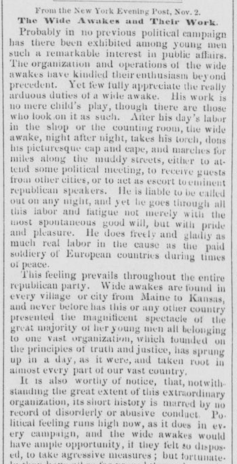
Boston Public Library Collection
Nearly everyone devoured them – from wealthy elites to schoolgirls to enslaved people technically banned from reading. Newspapers published scandals and rumors, riling mobs and sparking frequent attacks on editors – often by other editors.
Well into the 20th century, communities were still pulling newspaper presses out of local rivers, hurled there by angry mobs.
Ninety-five percent of newspapers had explicit political affiliations. Many were bankrolled by the parties directly. There was no concept of journalistic independence and nonpartisanship until the turn of the 20th century.
These partisan presses, not the government, even printed the election ballots. Readers voted by cutting ballots from their pages and bringing them to the polls. Imagine if TikTok influencers or podcasters were responsible for administering elections.
The telegraph may seem old-timey today, but after its introduction in the 1840s, Americans could disseminate breaking news across huge territories along electrical wires. It allowed people to argue the issues nationwide – before the internet, television or radio.
Digesting slavery’s evils daily
Americans became a people by arguing politics in the press.
When politics was local, the major parties had avoided discussing slavery, taking what Abraham Lincoln mocked as a “don’t care” attitude. But now that Maine could debate with Texas, the topic shot to the forefront. By the 1850s, Northerners digested its evils daily.
The National Era – an abolitionist press in Washington – first printed Harriet Beecher Stowe’s hair-raising “Uncle Tom’s Cabin,” by far the most influential antislavery novel in history.
Meanwhile, the radical pro-slavery magazine “De Bow’s Review” spread a maximalist vision of expanding slavery far and wide. Americans living thousands of miles from each other could argue the issue, and the only gatekeepers were editors who profited from spreading often legitimate outrage.
It’s fitting, then, that the Northern pushback to expanding slavery came from the 19th century equivalent of “very online” young newspaper readers. Early in the 1860 election, a core of young clerks in Connecticut formed a club to help campaign for the antislavery Republican Party. They happened to live in the state with the highest literacy rates and huge newspaper circulations. So when a local editor wrote that the Republicans seemed “Wide Awake” in the campaign, the boys named their club “the Wide Awakes.”
Adding militaristic uniforms, torch-lit midnight rallies and an open eye as their all-seeing symbol, a new movement was born, which I chronicle in my recent book, “Wide Awake: The Forgotten Force that Elected Lincoln and Spurred the Civil War.” Often, their chief issue was not the knotty specifics of what to do about slavery, but the fight for a “Free Press” – unsuppressed by supporters of slavery, South or North.
The Wide Awakes exploded across the national newspaper network. Within months of their founding, young Republicans were forming clubs from Connecticut to California.
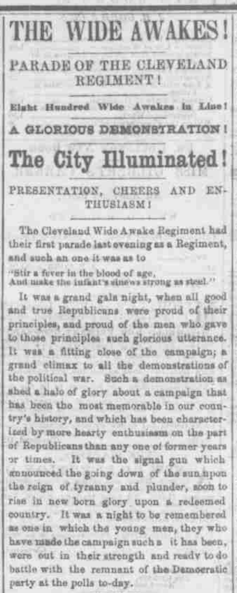
Library of Congress
Most learned how to organize their companies through the papers. They built a reciprocal relationship with America’s press: cheering friendly newspaper offices and harassing pro-slavery Democratic papers’ headquarters. Friendly editors returned the favor, marching with the Wide Awakes and pushing their readers to form more clubs, like the Indiana newspaperman who nudged: “Cannot such an organization be gotten up in this town?”
None of this could be admired as independent journalism, but it sure spread a movement. It only took a few months to turn the Wide Awakes into one of the largest partisan movements America had ever seen, believed to have 500,000 members – proportionally the equivalent of 5 million today.
‘From Maine to Oregon let the earth shake’
The same newspaper network spread fear as well. Readers in much of the South saw the clubs as a partisan paramilitary organization. Wild accounts shared accidental misinformation and deliberate disinformation, pushing the false notion that the Wide Awakes were preparing for a war, not an election.
The presence of a few hundred African American Wide Awakes in Boston morphed into claims in Mississippi that “the Wide Awakes are composed mainly of Negroes,” who were plotting a race war. A dispersed, partisan media exaggerated such falsehoods like a national game of telephone.
By the time Lincoln won election in November 1860, hysterical editors predicted a Wide Awake attack on the South. Secessionist newspapers used fears of Wide Awakes to help push states out of the Union. The Weekly Mississippian reported “WIDE-AWAKE INVASION ANTICIPATED,” the very day that state seceded.
Meanwhile, Wide Awake editors began to push back against the widening secession conspiracy. German newspapermen in St. Louis helped arm Wide Awake clubs for combat.
In Pennsylvania, the editor James Sanks Brisbin ordered Republicans to “organize yourselves into military companies. … Take muskets in your hands, and from Maine to Oregon let the earth shake to the tread of three millions of armed Wide-Awakes.”
What began in ink was spiraling into lead and steel. It took 16 years to develop from the introduction of the telegraph to the Civil War. Undoubtedly, the fight over slavery caused that conflict, but the newspapers fed it, amplified it, exaggerated it.
Mid-19th century Americans lived with an odd combination: an unprecedented ability to spread information, but also a siloed and partisan system of interpreting it. It helped the nation finally reckon with the crimes of slavery, but also spread bad faith, irrational panic and outright lies.
This history can add a needed perspective to today’s political conflicts, so often magnified by social media. In both eras, new technologies supercharged existing political tensions.
Yet we can see from this heated history that political media is less like an unstoppable, unreformable force that will consume democracy, and more like another in a succession of breathtaking, catastrophic, wild new landscapes that must be tamed.

